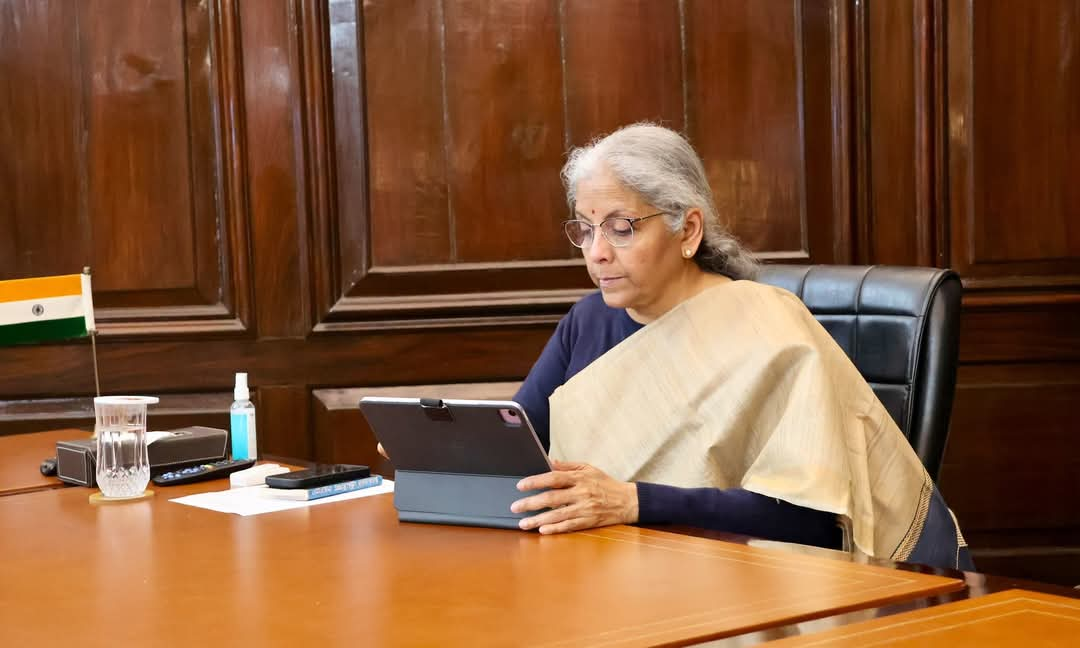Union Budget 2025-26: A Vision for Viksit Bharat with Focus on Inclusive Growth, Middle-Class Relief, and Investment in Innovation.
New Delhi:
In a forward-looking Union Budget for 2025-26, Finance Minister Nirmala Sitharaman introduced a set of bold proposals aimed at fueling India’s journey toward a “Viksit Bharat” (Developed India). The budget, with the theme “Sabka Vikas,” is designed to stimulate inclusive growth across all regions of the country by targeting four key development engines: Agriculture, MSMEs, Investment, and Exports.
Middle-Class Relief: A Tax Break for the Common Man
One of the most anticipated announcements was the new tax regime, which brings significant relief to the salaried class. The Finance Minister announced that no income tax will be levied on an average monthly income of up to Rs 1 lakh, benefiting millions of middle-class households. Under the new tax structure, individuals earning up to Rs 12.75 lakh annually will pay no income tax, with a standard deduction of Rs 75,000. The move is expected to boost savings and consumption, enhancing the purchasing power of the middle class and driving domestic demand.
Agriculture: Empowering Farmers and Ensuring Food Security
Agriculture remains at the heart of the Budget’s development strategy. Aimed at improving productivity, the ‘Prime Minister Dhan-Dhaanya Krishi Yojana’ will cover 100 low-productivity agricultural districts. The government will also launch a “Mission for Aatmanirbharta in Pulses,” targeting self-sufficiency in key pulses like Tur, Urad, and Masoor. This initiative includes a special focus on providing loans up to Rs 5 lakh via the Kisan Credit Card (KCC) under a modified interest subvention scheme, ensuring easier access to credit for farmers.
MSMEs: The Backbone of India’s Economy
The Budget acknowledges Micro, Small, and Medium Enterprises (MSMEs) as a crucial driver of India’s economic growth, contributing 45% to exports. To further boost MSMEs, the government has raised the investment and turnover limits for MSME classification and introduced a scheme offering up to Rs 2 crore in term loans to 5 lakh first-time women, SC, and ST entrepreneurs. A National Manufacturing Mission will promote “Make in India,” with initiatives aimed at increasing the country’s manufacturing output.
Investment and Innovation: Paving the Path for Future Growth
The Budget places a strong emphasis on investments, both in human capital and infrastructure. A substantial allocation of Rs 1.5 lakh crore will be used to provide interest-free loans to states for capital expenditure, while Rs 20,000 crore will be invested in Research and Development to foster innovation. To future-proof the economy, the government also plans to establish 50,000 Atal Tinkering Labs in government schools within the next five years, enhancing innovation and entrepreneurship from a young age.
A Centre of Excellence for Artificial Intelligence in education will be set up with a Rs. 500 crore outlay, and efforts will be made to improve broadband connectivity in rural schools and health centres, ensuring equitable access to digital education and healthcare.
Export Growth: Connecting India to Global Markets
Exports have been identified as another crucial growth engine. To bolster India’s position in the global supply chain, a “BharatTradeNet” digital platform will be introduced, offering unified trade documentation and financing solutions. The government is also focused on strengthening domestic manufacturing to meet international demand, with an emphasis on electronics and high-value horticulture exports. To ensure that India’s small industries benefit from the export boom, the government will provide support for MSMEs to tap into international markets.
Financial Sector Reforms: Easing Compliance and Promoting Investment
The government continues to prioritize ease of doing business. As part of ongoing financial sector reforms, the FDI limit for insurance companies has been increased from 74% to 100%, encouraging foreign investment in the sector. Furthermore, the introduction of the Jan Vishwas Bill 2.0 aims to decriminalize over 100 provisions across various laws, streamlining the regulatory environment. A new high-level committee will also review non-financial sector regulations to reduce compliance burdens and promote transparency.
Fiscal Consolidation and Deficit Targets
The government has reaffirmed its commitment to fiscal discipline, with the fiscal deficit for FY 2025-26 projected at 4.4% of GDP, down from 4.8% in the previous year. The Budget outlines a detailed fiscal roadmap to gradually reduce the Central Government’s debt as a percentage of GDP, aligning with India’s long-term economic goals.
Customs and Import Duty Reforms: Encouraging Domestic Manufacturing
In a bid to promote “Make in India,” the Budget has made several changes to customs duties. Basic Customs Duty (BCD) on several industrial goods, including lithium-ion battery materials and shuttle-less looms, has been exempted to encourage local manufacturing. Additionally, to promote the domestic production of critical materials, the BCD on certain raw materials like cobalt powder and lithium-ion battery components has been reduced or eliminated entirely.
Conclusion: A Vision for a Self-Reliant, Prosperous India
With a clear focus on boosting the economy, promoting domestic manufacturing, ensuring social welfare, and enhancing global competitiveness, the Union Budget 2025-26 sets the stage for India’s transformation into a developed nation. Through strategic reforms, investment in innovation, and targeted support for key sectors, the budget aims to empower all sections of society—particularly the middle class, farmers, women, and entrepreneurs—ensuring equitable growth across the country.
As India continues its journey toward becoming a “Viksit Bharat,” the measures announced today promise to create a thriving, self-reliant economy, one that is resilient in the face of global challenges and poised to lead on the world stage.



